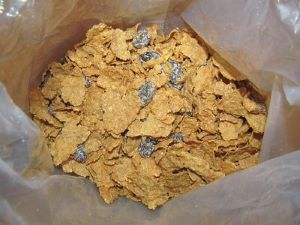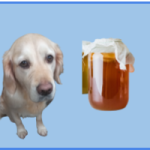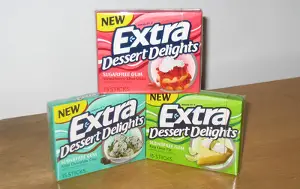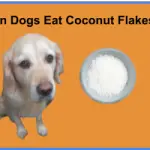
Does your dog have loose stools?
Have you read about the importance of fiber in a diet in order to create a healthy digestion system?
And is an easy way for you to do by using the box of Bran Flakes that you have in a cupboard?
But can dogs eat Bran Flakes?
How much bran do they contain and are the rest of the ingredients dog- safe.
Let’s find out shall we?
Can dogs have Bran Flakes?
Unless your dog is wheat intolerant, then Bran Flakes don’t contain any ingredients which are toxic to your dog.
Like most breakfast cereals they contain ingredients which are healthy and some which aren’t so healthy.
But overall, they are dog safe.
As well as looking at the specific ingredients and nutrients within Bran Flakes, I will also look at some of the worst and best breakfast cereals that you can feed to your dog.
But to start this article off, I want to take a look at what bran is.
After all, it is the star of the show.
What is bran?
Bran is the hard outer layer of many cereal grains such as rice, corn, wheat oats and barley.
The main nutritional advantage of bran is that it is high in dietary fibre, which make up nearly half of its content.
Fiber helps with a dog’s digestion because it helps stool move through the system faster.
Other attractive qualities include the fact that it is low in calories and saturated fat.
What are the ingredients in Bran Flakes?
There are nine ingredients listed on a box of Bran Flakes and they are:
Whole wheat (59%)
Wheat bran (18%)
Whole wheat flour
Sugar
Barley
Malt extract
Glucose Syrup
Salt
Natural Flavourings
Having found out how powerful bran is in the previous section, this list shows us that 18% of Bran Flakes are bran.
But a whooping 59% of this cereal is whole wheat.
Now don’t panic because whole wheat is also a very healthy grain unless your dog has a wheat intolerance- but more on that later.
So these Bran Flakes are actually 77% flakes of wheat!
And there is nothing wrong with wheat for your dog- unless your dog is gluten intolerant.
In which case you shouldn’t let your dog anywhere near Bran Flakes.
And wheat is the only potentially toxic ingredient in a Bran Flake.
There is nothing else in them that would possibly poison your dog in any way.
But, of the remaining seven ingredients, three are sugar in one form or another.
And they are:
Sugar
Malt extract and
Glucose syrup
Malt extract is just over 40% sugar and glucose syrup is nearly 30% sugar.
And the dangers of sugar for your dog are the same as they are for people.
The first issue is that too much sugar might damage your dog’s teeth and lead to them getting fatter!
So having looked at individual ingredients, in the next section I want to move on and look at the nutrition in Bran Flakes.
What is the nutrition in Bran Flakes?
Cereals are a strange group of foods because most of them are “fortified.”
And by this I mean that they have extra vitamins and minerals added into them- on top of the basic ingredients.
The reason for fortification is to make sure that people don’t suffer from mineral deficiencies.
In many Western countries, such as the US and UK, fortification is a legal requirement.
In the US, fortification started in the 1920s and by the 1930s a link was found between nutritional deficiencies and specific diseases.
The eight vitamins and minerals that are added to Bran Flakes are:
Niacin (B3)
Iron
Vitamin B6
Riboflavin (B2)
Thiamin (B1)
Folic acid (B9)
Vitamin D
Vitamin B12
Which include six B vitamins.
Fortification, of course, wasn’t done for the benefit of breakfast eating dogs but for humans.
But dogs do need to eat foods with B vitamins in them because they cannot make these vitamins themselves- unlike vitamin C which they can.
But how will B vitamins help your dog?
The first way in which B vitamins might help your dog is with their metabolism- converting their food into energy.
Next up, B vitamins help to boost and maintain the immune system.
And finally, B vitamins help to keep the cells in a dog’s body nice and healthy.
Now that the vitamins have been “done and dusted”, it is time to move on to minerals.
The only mineral added into Bran Flakes is Iron.
Iron is important for dogs because of the role that it plays in helping to make red blood cells-which transport blood around their body.
What other cereals contain bran?
Let’s face it, cereals are a very convenient food. They are relatively cheap and very easy to store.
And so if you are warming to the idea of adding bran to your dog’s diet, I will now look at some of the other main cereals that contain bran in them.
The king of bran cereals is All Bran.
This was a favourite of my Mum’s and I remember it always being in the cupboard when I was growing up.
All Bran is 87% wheat bran, which is impressive, isn’t it.
The remaining 13% is made from sugar, barley, malt, flavouring and salt.
None of which is poisonous to your dog, which is great news.
A variation of All Bran is All Bran Golden Crunch, which contains much less bran and far more sugar and flour than the original.
Still, although these ingredients aren’t necessarily healthy for your dog, neither are they toxic to them.
Which leads me very nicely into my next topic-which is breakfast cereals that your dog must never ever eat.
What cereals can dogs never eat?
Sometimes the most innocent of ingredients pose the greatest risk.
Sultana Bran is another popular cereal made by Kellogs.
Made from 43% wholewheat and 13% wheat bran, everything looks rosy until you realise that 27% of every bowl of Sultana Bran contains sultanas.
And sultanas are dog killers. As are any variety of grape or grape products such as raisins.
Vets have yet to discover why grapes pose such a lethal threat to dogs.
They just know that they are so toxic that even one grape is enough to kill some small dogs.
Raisins and sultanas are an incredibly popular ingredient in breakfast cereals.
In fact, some of the most healthy types contain raisins.
I’m thinking here of cereals such as muesli or porridge oats- two of my favourites.
Muesli contains raisins or sultanas and many people add dried fruit to oats in order to jazz it up.
As far as breakfast cereals go, raisins or sultanas are the main threats to your dog’s health.
Other dried fruit such as cranberries are perfectly safe for your dog to eat.
The only other real threat that certain fruits pose to your dog are any fruits with large stones in them- such as mangos, peaches or cherries.
There is nothing wrong with the flesh from the fruit but the stones contain cyanide.
But the risk of choking on the stone is more likely than cyanide poisoning: because the levels of cyanide in the stones are so low.
If you do eat these fruits for breakfast or add them into your morning smoothie, just don’t leave the stones lying around within easy reach of your dog..
After all that doom and gloom, I want to talk about happier things next.
As I wrap up this article, I want to take a look at the best breakfast cereals to feed your dog.
What is the best breakfast cereal for dogs?
You might be relieved to hear that I have a short list of two.
And that I only really want to focus on one of them.
Porridge oats and shredded wheat are the two healthiest breakfast cereals to feed your dog.
These are the two healthiest cereals because they each only contain one ingredient.
Porridge oats just contain rolled oats and Shredded Wheat only contains whole wheat.
Now before I start to wax lyrically about porridge oats, I want to say a couple of things about Shredded Wheat.
Firstly, if your dog has a wheat allergy, steer well clear of them.
Secondly, there are several varieties of Shredded Wheat.
Only the original 100% whole wheat varieties should be considered as healthy for your dog.
Other varieties that include honey or berries have far too much added sugar to be included.
Now, where were we?
Oh yes, porridge oats.
These are very cheap and although they are high in carbohydrates (68%) they are also high in fibre (10%) and protein (13%).
And, of course, they contain no added sugar!
So if you wanted a cheap and convenient way to boost the protein or the fiber in your dog’s diet, you might want to try porridge oats.
Just remember to go easy on the amount that you add.
Large dogs should only have a few tablespoons, small dogs need teaspoon sized portions…
Photo credits
¹ Photo by Willis Lam on Flickr





